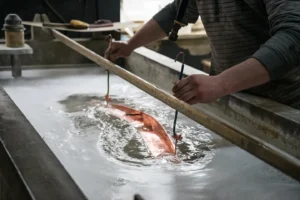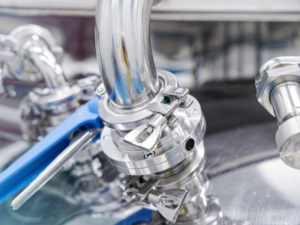Anodizing aluminum for medical components creates a durable and corrosive-resistant coating with aesthetic benefits. Anodized aluminum is used to produce a wide range of medical instruments, devices, and parts such as stethoscopes, blood and laboratory processing, regulators, oxygen machinery, and hospital equipment.
Many of the same qualities that make aluminum desirable in so many industries such as architecture, aerospace, and tech, are also advantageous for the medical industry. Aluminum is frequently used for manufacturing medical devices and equipment due to its weight to strength ratio, sustainability qualities, lower cost, and thermal conductivity. It is recyclable, non-toxic, easily machined, and accepts many types of finishes.
Medical equipment is often exposed to bodily fluids, heavy-duty cleaners, and other corrosive liquids. Metal stability is critical for medical devices that must hold tight tolerances and endure intense cleaning and sterilization. The chemical cleaning and sterilizing can also present problems for most metal coatings.
Anodizing is used to passivate the aluminum surface, increase the metal’s strength, and provide corrosion resistance. It is an environmentally safe electrochemical passivation process that increases the thickness of the natural oxide layer and creates a porous surface that makes it receptive to color or a protective coating.
Anodizing Aluminum Process
Anodizing is a “conversion coating” because it converts the surface into aluminum oxide. This is different from most other protective finishes which are coverings on top of the surface.
The anodizing process involves immersing the aluminum part into an acid electrolytic bath and passing an electrical charge through the medium. A cathode is located on the outside of the tank, while the aluminum part being treated serves as an anode. As the current moves through the bath, oxygen ions are released from the acid electrolyte and integrated with the component’s surface to produce the aluminum oxide layer. This is the reason anodizing doesn’t chip or flake.
Anodizing Aluminum Standards
There are different processes and standards for aluminum anodizing. The most prevalent specifications have been derived from the defense, aerospace, and automotive industries.
The two primary types of anodizing aluminum are Type II and Type III and both types are extremely hard coatings.
Type II anodizing, also called decorative anodizing, is an anodic coating where the primary function is to increase corrosion and scratch resistance. Sulfuric acid is used to remove the positive particles from the aluminum surface leaving microscopic pores and forming the integrated oxide layer. The amazing benefit of anodizing aluminum is that the pores produced can be filled with tinted pigments to easily add color. The pores are filled to the surface and sealed by the protective layer. This creates a scratch-resistant color that cannot fade because it exists well below the metal surface.
Type III anodizing, also known as hard coat, is used for parts that need greater corrosion protection to endure elevated temperatures or more aggressive and corrosive environments. It is a more dense and durable coating, typically with three to four times the thickness of Type II, which is used for maximum scratch and wear resistance.
A durable, reusable medical device must be able to withstand at least 50 to 100 cycles of vaporized hydrogen peroxide or peracetic acid sterilization, or the use of a high-alkaline cleaner without significant loss of color or coating integrity.
Properly anodizing medical components will create strong and chemically resilient devices with vivid color for proper identification. In addition to the correct thickness, medical parts must have a smooth and even finish.
Because poor anodize conditions result in weak coatings that will fade, peel, and blister, medical parts manufacturers must be selective in choosing a finishing partner.
AMF Technologies is the finishing partner with many years of medical industry experience, regulatory knowledge, and finishing expertise to achieve your desired results. We provide top quality from start to finish. Contact us with questions about anodizing or our other finishing services.














